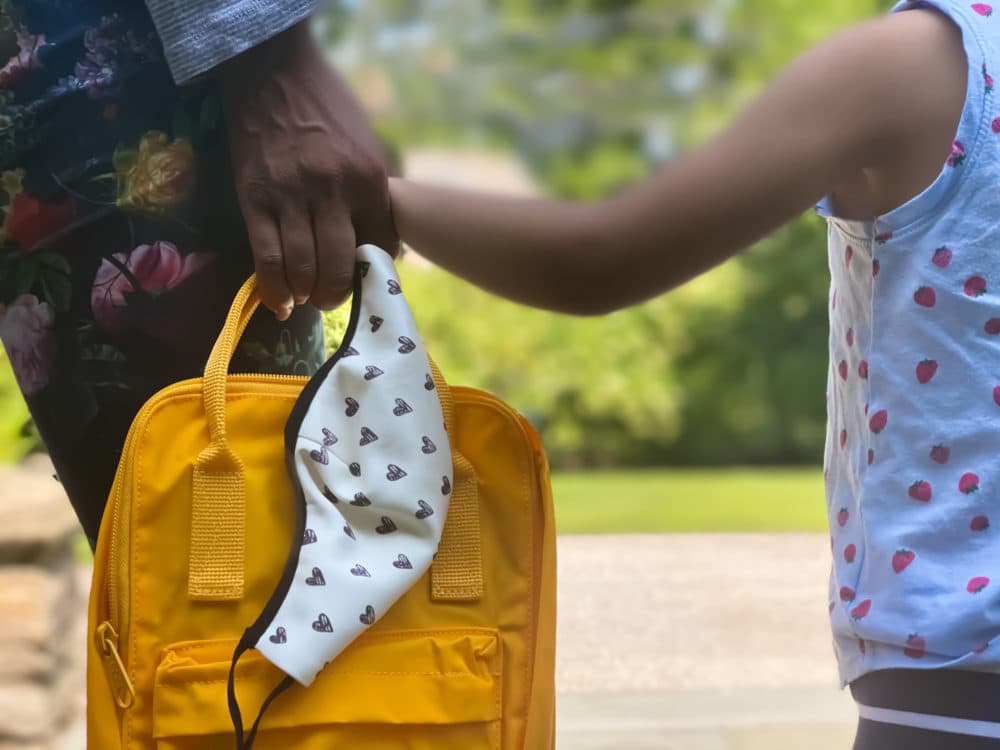Advertisement
Coronavirus Coverage
As masks come off, what parents and day care centers can do to reduce COVID risks

When Gov. Charlie Baker announced he was lifting mask mandates for preschools and day cares, some parents were overjoyed. However, others expressed concern, worrying it could put their children, who aren't yet eligible for vaccines, at increased risk of developing COVID-19.
Among parents who felt the move was premature, one study circulated widely. It came out in the journal JAMA Network Open and surveyed child care providers from across the country on what they were doing to prevent the spread of COVID. After a follow up survey one year later, the researchers found that the most effective strategy in reducing the number of temporary closures cause by COVID cases was requiring masks for kids over 2 years old.
“The one thing that we found that was statistically significant was the programs who had put masks on children starting early in the pandemic were 13% less likely to close than those who did not,” said Thomas Murray, lead author of the study.
WBUR asked Murray, a pediatrician and associate medical director for infection prevention at Yale New Haven Children's Hospital, how parents and providers should think about Massachusetts removing mask mandates for day cares and preschools, and what worried parents can do.
The Purpose Of Masking
Murray says it’s important to remember why we mask. Masks are an effective way to prevent transmission of the virus if you come into contact with someone who is infected. The best prevention method of all is to avoid contact with any infected people.
“Frankly, if you're able to keep COVID out of the classroom, then the masking becomes less of an important risk mitigation strategy,” he said.
Murray declined to weigh in on whether child care centers should be removing masks right now. Instead, he said, if a day care or preschool decides not to require masks, the staff should put other strategies in place to reduce the COVID risk.
How To Keep COVID Out
There are two key strategies for keeping COVID outside the doors of a preschool or day care setting: careful symptom screening and testing.
Murray said child care centers should make sure parents are screening their children for things like runny noses and mild fevers before they show up for the day. And, he said, it’s important to be cautious and not just give your child ibuprofen (a fever reducing medicine) and hope a slight fever goes away.
“I anticipate that when masks come off kids, you're going to see more of all respiratory viruses, not just COVID, but the common cold will become more common again. And that's where rapid testing becomes critically important,” he said.
Massachusetts’s Department of Early Education & Care, or EEC, is offering all EEC-licensed programs a variety of free COVID testing options, including pooled testing and rapid antigen tests.
Murray says day cares and preschools can make use of both tools to identify what's a cold and what isn't, and to help catch COVID cases as quickly as possible.
Strategies To Prevent Transmission
Apart from masking, the other key strategy to reduce the transmission of COVID in the classroom is ventilation.
“In New England, one of our challenges is ventilation is not always easy. Especially in February, it's hard to open windows,” Murray said. “And some of our schools are older and don't have spectacular ventilation systems.”
When that’s the case, he recommends a portable HEPA air filter. And others experts have shown that homemade Corsi-Rosenthal Boxes are also highly effective — and cheaper.
Is One-Way Masking Enough?
As we move into a phase of the pandemic, where mask wearing is increasingly optional, Murray says it’s “incredibly important” to understand what different masks are designed to do.
“The purpose of a KN95 or N95 is to protect you because it filters the particles that you breathe in,” he said.
Many other masks — like surgical masks — are designed to prevent respiratory droplets from spreading throughout a classroom if someone does have COVID. These masks are far less protective to the individual wearing them.
The White House has said it is working on improving the availability of protective, high-filtration masks for children. N95s are not available in children’s sizes but, Murray points out, there are KN95s and KF94s available for children.
How To Talk To Kids About Masks
Many preschools and day care centers have had mask requirements for two years.
“In a kid's life, that's a long time,” Murray said. “It is a big change for many of them.”
Regardless of whether a family has decided to keep masks on or take them off, Murray says, parents should consider discussing the issue with kids, since they’ll notice changes around them.
"It's important to have that open conversation and make sure that you and your child are on the same page and reduce any anxiety," Murray said.
